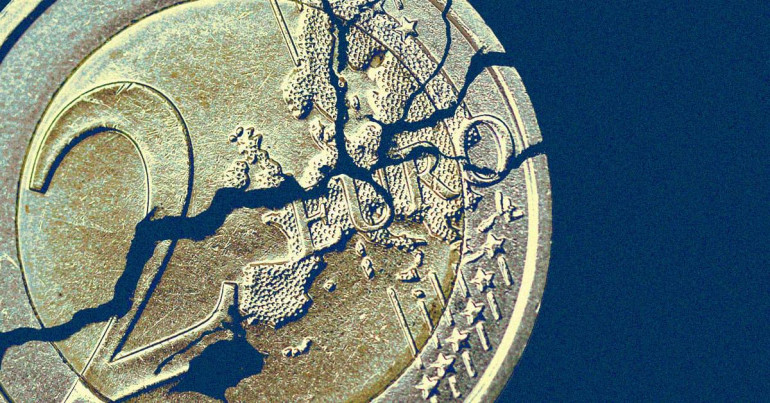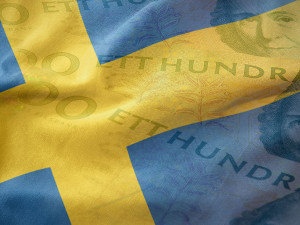
The euro’s collapse is not likely, but like all currencies, it is not infallible. Much like the US dollar’s likelihood of collapse, it is not likely that the euro will collapse due to the anchoring of the currency in many world economies.
However, the euro has had its fair share of economic turmoil in its relatively short history, such as the eurozone crisis, so only time will tell whether the euro will continue the next 20 years with the same stability as today.

The creation of the euro
The creation of the euro and eurozone has not been straightforward. The first concrete idea of a united European currency dates back to 1929 when several new nations were created in Europe after WWI, and Gustav Stresemann proposed a united European Monetary Union in the League of Nations to promote growth but was ultimately rejected.
At the Den Haag summit in 1969, another attempt was made to create a union, but it was derailed following the abolition of the Bretton Woods system.
A high-level commission formed by Luxembourg’s Prime Minister Pierre Werner presented several recommendations. After that report, the “snake in the tunnel” attempt to stop currency changes failed in 1973. Finally, in 1979, the European Monetary System was put together. In the European Currency Unit, exchange rates were set in stone to fight inflation and keep currency changes from getting out of hand. Setting up a single currency was the goal of the Maastricht Treaty in 1992. Resistant to this were Denmark and the UK, which didn’t want to use the European currency at all.
The euro was officially launched in 1999, and the first coins and bills were used in 2002. The original members were: Belgium, France, Italy, Ireland, Luxembourg, the Netherlands, Spain, Portugal, Austria, and Finland (joined in 1999). After this, a number of countries slowly joined the euro: Greece in 2001, Slovakia in 2009, Slovenia in 2007, Malta and Cyprus in 2008, Estonia in 2011, Latvia in 2014, and Lithuania in 2015.

Introduction of the eurozone
The eurozone took seven years of planning in total and was originally comprised of 11 countries. The 11 currencies of these nations moved relatively easily to the fixed euro exchange rates. In order to meet the Maastricht standards for membership, countries were required to pass several criteria in order to join, although as demonstrated by the Greek financial crisis, there was some questionable activity. After Greece joined the eurozone in 2000, it emerged that the government had fudged their numbers in order to enter the EU, and furthermore, a double standard was revealed as many countries were denied EU entry due to their financial data. This could potentially reveal a fracture in the EU’s supposed stability.
Eurozone crisis
There were almost no spreads at this point. It seemed as if the countries in the eurozone thought that government bonds were (almost) perfect replacements. With this in mind, investors thought that the risk of owning a Greek government bond was the same as the risk of owning a German bond. Some economists refer to this as the eurozone’s honeymoon period.
There were big changes in how the markets for government bonds saw risk after the 2008 financial crisis. The financial crisis made the budgets and bills of the governments of the countries that were hit the hardest get worse very quickly. There was no central bank ready to provide cash to the national government bond markets during times of crisis. This led to the self-fulfilling liquidity crises previously discussed.
It took the European Central Bank (ECB) a while to admit that it had made a mistake. In September 2012, it was ready to provide unlimited cash support to the government bond markets. The so-called Outright Monetary Transactions (OMT) program started a reset process that slowly brought yields back to where they were before. There were times when this alignment wasn’t even, like when Greece went through its second crisis in 2015.
In the end, it led the yields to almost completely match up by the end of 2019. Fear in the market was reduced when the European Central Bank promised to buy as many government bonds as needed in case of a liquidity problem. Individual buyers suddenly thought that Greek, Spanish, and Italian bonds were cheap, even though their values had dropped because of worries about not having enough cash on hand. They went back to these bond markets in force, buying bonds and driving up their prices.

Impact of a potential collapse
If the euro collapsed, it would likely fuel an economic crisis with drastic inflation, such as currently seen in Venezuela. The collapse could fuel political instability in Europe too. It could potentially strengthen eurosceptic and nationalist movements, and easily cause conflicts within Europe, not only between countries, but civil protests like the Greek anti-austerity riots.
The Schengen Area is a region of the EU agreed on 14 June 1985 (rolled out in 1995) by Belgium, Germany, France, Luxembourg and the Netherlands. Within this area, controls at internal borders are gradually removed to introduce freedom of movement. If the euro collapsed, the Schengen Area would likely be abolished. This deal lets money, goods, services, and people from 26 different European countries move freely across the limits of the eurozone. There are some EU members who are also Schengen participants, but not all EU members are part of Schengen. This harmony between countries would likely be severed overnight.
Conclusion
The euro is unlikely to collapse outright, but the currency still faces many challenges, as demonstrated by the eurozone crisis. Countries are still looking to join the EU, and now that Brexit negotiations have settled, the relationship between the UK and EU has brought greater stability to Europe in the last few years. However, due to the unwieldy nature and diversity of all the countries within the eurozone, another crisis is potentially on the cards.
For more articles on currency and economics, make sure to stay posted on our weekly articles at CurrencyTransfer in our Expert Analysis section. We also post daily updates on the market with our Market Commentary.
Sign up for an account with CurrencyTransfer today for free, and you’ll be assigned an account manager who will help you every step of the way.
Caleb Hinton
Caleb is a writer specialising in financial copy. He has a background in copywriting, banking, digital wallets, and SEO – and enjoys writing in his spare time too, as well as language learning, chess and investing.



